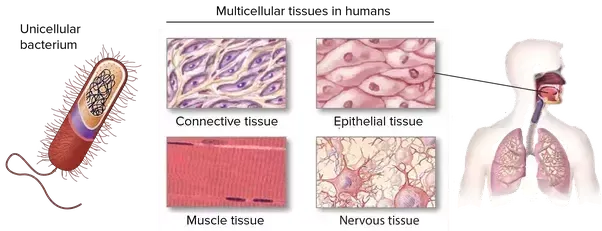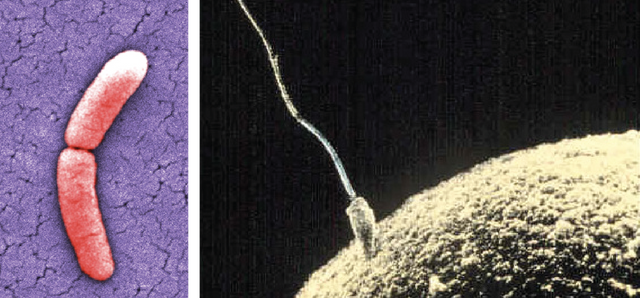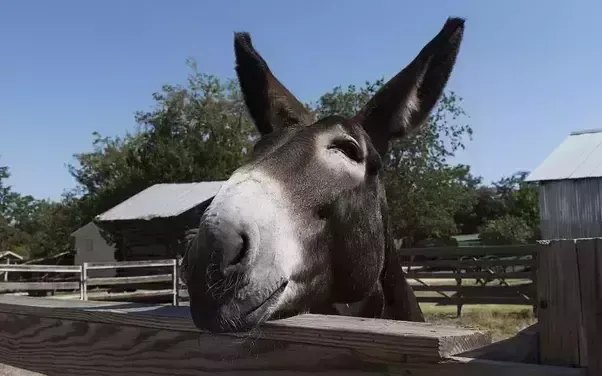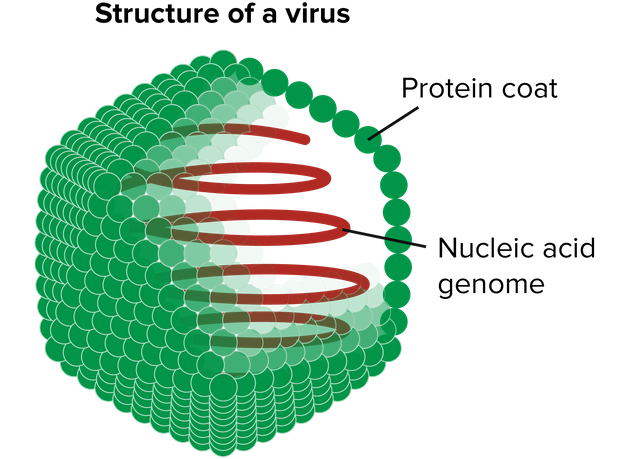
The following answers to this fundamental question each win a random book.
Life is the aspect of existence that processes, acts, reacts, evaluates, and evolves through growth (reproduction and metabolism). The crucial difference between life and non-life (or non-living things) is that life uses energy for physical and conscious development. Life is anything that grows and eventually dies, i.e., ceases to proliferate and be cognizant. Can we say that viruses, for example, are cognizant? Yes, insofar as they react to stimuli; but they are alive essentially because they reproduce and grow. Computers are non-living because even though they can cognize, they do not develop biologically (grow), and cannot produce offspring. It is not cognition that determines life, then: it is rather proliferation and maturation towards a state of death; and death occurs only to living substances.Or is the question, ‘What is the meaning (purpose) of life?’ That’s a real tough one. But I think that the meaning of life is the ideals we impose upon it, what we demand of it. I’ve come to reaffirm my Boy Scout motto, give or take a few words, that the meaning of life is to: Do good, Be Good, but also to Receive Good. The foggy term in this advice, of course, is ‘good’; but I leave that to the intuitive powers that we all share.
Biophysics
To reflect the minimum phenomena required, other biological definitions of life have been proposed, with many of these being based upon chemical systems. Biophysicists have commented that living things function on negative entropy. In other words, living processes can be viewed as a delay of the spontaneous diffusion or dispersion of the internal energy of biological molecules towards more potential microstates.In more detail, according to physicists such as John Bernal, Erwin Schrödinger, Eugene Wigner, and John Avery, life is a member of the class of phenomena that are open or continuous systems able to decrease their internal entropy at the expense of substances or free energy taken in from the environment and subsequently rejected in a degraded form
Properties of life
Biologists have identified various traits common to all the living organisms we know of. Although nonliving things may show some of these characteristic traits, only living things show all of them.
Organization
Living things are highly organized, and all living organisms are made up of one or more cells, which are considered the fundamental units of life. Individual cells perform complex biochemical processes needed to maintain their structure and function, and each cell is highly organized.Unicellular organisms consist of only a single cell, while multicellular organisms—such as humans—are made up of many cells. The cells in multicellular organisms may be specialized to do different jobs and are organized into tissues, such as connective tissue, epithelial tissue, muscle, and nervous tissue. Tissues make up organs, such as the heart or lungs, which carry out specific functions needed by the organism as a whole.

Metabolism
Life depends on an enormous number of interlocking chemical reactions. These reactions make it possible for organisms to do work—such as moving around or catching prey—as well as growing, reproducing, and maintaining the structure of their bodies. Living things must use energy and consume nutrients to carry out the chemical reactions that sustain life. The sum total of the biochemical reactions occurring in an organism is called its metabolism.Metabolism can be subdivided into anabolism and catabolism. In anabolism, organisms make complex molecules from simpler ones, while in catabolism, they do the reverse. Anabolic processes typically consume energy, whereas catabolic processes can make stored energy available.
Homeostasis
Living organisms regulate their internal environment to maintain the relatively narrow range of conditions needed for cell function. For instance, your body temperature needs to be kept relatively close to 98.6^\circ
∘
degreeF (37^\circ
∘
degreeC). This maintenance of a stable internal environment, even in the face of a changing external environment, is known as homeostasis. [Show example of how homeostasis is maintained.]Image of a jackrabbit in the desert, showing the rabbit's very thin—almost see-through—heavily veined ears, which are used for heat dissipation.
Growth
Living organisms undergo regulated growth. Individual cells become larger in size, and multicellular organisms accumulate many cells through cell division. You yourself started out as a single cell and now have tens of trillions of cells in your body^1
1
start superscript, 1, end superscript! Growth depends on anabolic pathways that build large, complex molecules such as proteins and DNA, the genetic material.
Reproduction
Living organisms can reproduce themselves to create new organisms. Reproduction can be either asexual, involving a single parent organism, or sexual, requiring two parents. Single-celled organisms, like the dividing bacterium shown in the left panel of the image at right, can reproduce themselves simply by splitting in two!

In sexual reproduction, two parent organisms produce sperm and egg cells containing half of their genetic information, and these cells fuse to form a new individual with a full genetic set. This process, called fertilization, is illustrated in the image at far right.
Response
Living organisms show “irritability,” meaning that they respond to stimuli or changes in their environment. For instance, people pull their hand away—fast!—from a flame; many plants turn toward the sun; and unicellular organisms may migrate toward a source of nutrients or away from a noxious chemical.
Short movie (GIF) of a Mimosa pudica plant responding to touch. When the tip of a branch is touched, the leaves on that branch rapidly fold inwards in series, starting with those closest to the touched point.
Evolution
Populations of living organisms can undergo evolution, meaning that the genetic makeup of a population may change over time. In some cases, evolution involves natural selection, in which a heritable trait, such as darker fur color or narrower beak shape, lets organisms survive and reproduce better in a particular environment. Over generations, a heritable trait that provides a fitness advantage may become more and more common in a population, making the population better suited to its environment. This process is called adaptation.
Is this the definitive list?
Living organisms have many different properties related to being alive, and it can be hard to decide on the exact set that best defines life. Thus, different thinkers have developed different lists of the properties of life. For instance, some lists might include movement as a defining characteristic, while others might specify that living things carry their genetic information in the form of DNA. Still others might emphasize that life is carbon-based.

It’s also true that the list above is not foolproof. For instance, a mule, the offspring of a female horse and a male donkey, is unable to reproduce. However, most biologists (along with everyone else) would consider a mule, pictured at right, to be alive. A similar point is illustrated in this amusing story: a group of scientists had, after much debate, decided that ability to reproduce was the key property of life. To their disappointment, someone pointed out that a lone rabbit did not meet this bar^2
2
start superscript, 2, end superscript.
Nonetheless, the list above provides a reasonable set of properties to help us distinguish between things that are alive and those that are not.
Separating living and non-living things
How well do the properties above allow us to determine whether or not something is alive? Let’s revisit the living and nonliving things we saw in the introduction as a test.The living things we saw in the introduction—humans, dogs, and trees—easily fulfill all seven criteria of life. We, along with our canine friends and the plants in our yards, are made of cells, metabolize, maintain homeostasis, grow, and respond. Humans, dogs, and trees are also capable of reproducing, and their populations undergo biological evolution
Nonliving things may show some, but not all, properties of life. For instance, crystals of snow are organized—though they don't have cells—and can grow but don’t meet the other criteria of life. Similarly, a fire can grow, reproduce by creating new fires, and respond to stimuli and can arguably even be said to “metabolize.” However, fire is not organized, does not maintain homeostasis, and lacks the genetic information required for evolution
Living things may keep some properties of life when they become nonliving, but lose others. For instance, if you looked at the wood in a chair under a microscope, you might see traces of the cells that used to make up the living tree. However, the wood is no longer alive, and, having been made into a chair, can no longer grow, metabolize, maintain homeostasis, respond, or reproduce.
What counts as life is still being defined.
The question of what it means to be alive remains unresolved. For instance, viruses—tiny protein and nucleic acid structures that can only reproduce inside host cells—have many of the properties of life. However, they do not have a cellular structure, nor can they reproduce without a host. Similarly, it’s not clear that they maintain homeostasis, and they don’t carry out their own metabolism. 
Diagram of a virus. The virus consists of a nucleic acid genome inside an external protein coat.For these reasons, viruses are not generally considered to be alive. However, not everyone agrees with this conclusion, and whether they count as life remains a topic of debate. Some even simpler molecules, such as self-replicating proteins—like the “prions” that cause mad cow disease—and self-replicating RNA enzymes, also have some, but not all, of the properties of life.Moreover, all of the properties of life we have discussed are characteristic of life on earth. If extraterrestrial life exists, it may or may not share the same characteristics. Indeed, NASA’s working definition that “life is a self-sustaining system capable of Darwinian evolution” opens the door to many more possibilities than the criteria defined above33
3
start superscript, 3, end superscript. However, this definition also makes it hard to quickly decide whether something is alive!As more types of biological entities are discovered, on Earth or beyond, they may demand that we re-think what it means for something to be alive. Future discoveries may call for revisions and extensions of the definition of life.
What do you think?
How would you define life? Would you add something to the list of properties above, subtract something, or use an entirely different definition? Can you think of exceptions or special cases that aren’t covered by the list? Share your ideas in the comments section below!
Not indicating that the content you copy/paste is not your original work could be seen as plagiarism.
Some tips to share content and add value:
Repeated plagiarized posts are considered spam. Spam is discouraged by the community, and may result in action from the cheetah bot.
Creative Commons: If you are posting content under a Creative Commons license, please attribute and link according to the specific license. If you are posting content under CC0 or Public Domain please consider noting that at the end of your post.
If you are actually the original author, please do reply to let us know!
Thank You!
Downvoting a post can decrease pending rewards and make it less visible. Common reasons:
Submit
Hi! I am a robot. I just upvoted you! I found similar content that readers might be interested in:
https://www.khanacademy.org/science/biology/intro-to-biology/what-is-biology/a/what-is-life
Downvoting a post can decrease pending rewards and make it less visible. Common reasons:
Submit
Congratulations @surendrashahwal! You have received a personal award!
Click on the badge to view your Board of Honor.
Downvoting a post can decrease pending rewards and make it less visible. Common reasons:
Submit
Congratulations @surendrashahwal! You received a personal award!
You can view your badges on your Steem Board and compare to others on the Steem Ranking
Vote for @Steemitboard as a witness to get one more award and increased upvotes!
Downvoting a post can decrease pending rewards and make it less visible. Common reasons:
Submit